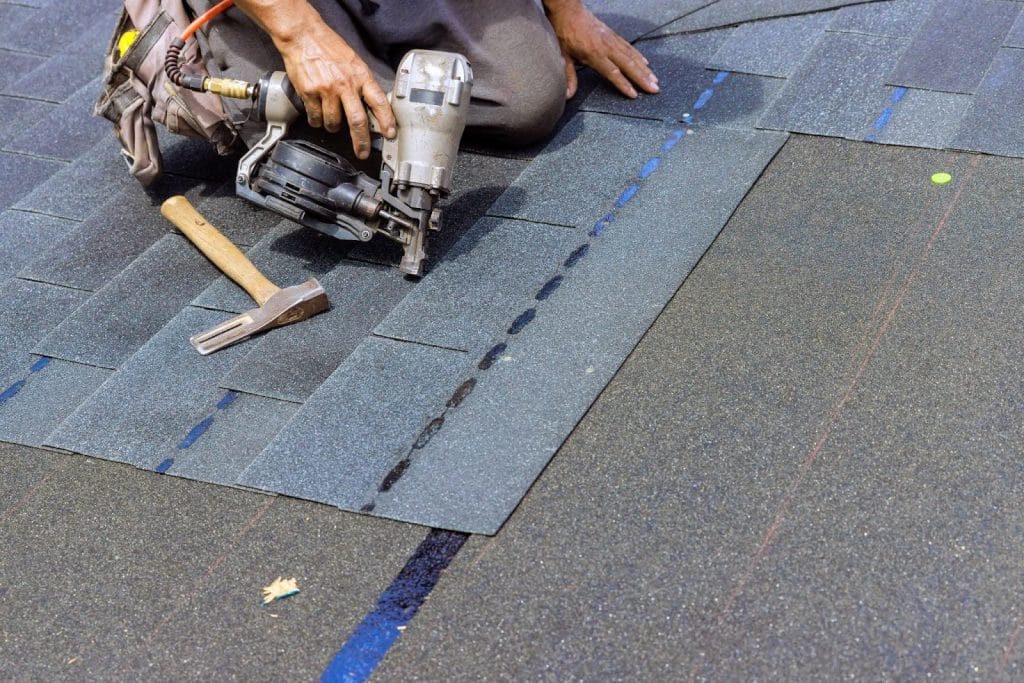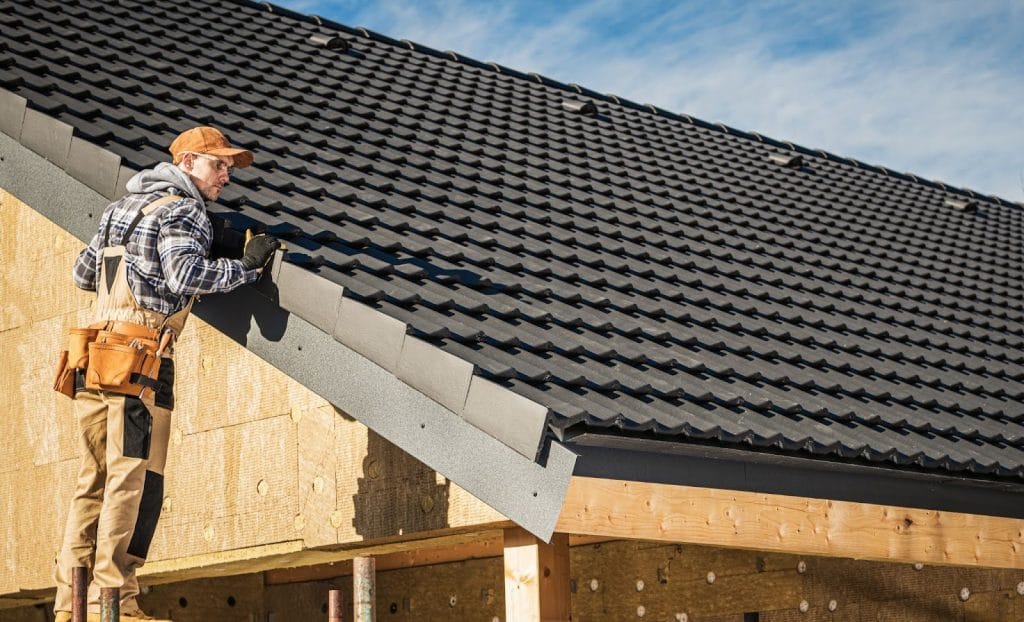How to Estimate Roofing Materials
Whether you plan to do a roofing job yourself or just want to have an idea of how much materials should cost for a job, being able to do the estimations yourself is important. It will help you avoid wasting materials and give you peace of mind that only the right amount of materials are being purchased for a job.
When it comes to the estimations, you will primarily rely on determining the area of your roof in question, then using the square footage to calculate the materials needed. Aside from the overall size, flashing and unique aspects will also need to be calculated, which you can learn more about below.
Estimating Shingles
Shingles are a common roofing choice with the benefits of being affordable and lasting quite a long time. Moreover, the material is not difficult to estimate, only requiring you to determine the square footage of the roof and calculate down to the shingles needed from there. After that, you just need to calculate a bit more for potential waste.
Determine the Square Footage
Determining the square footage of your roof can be as simple or difficult as you make it. Some roofs are complex, but so long as you break everything into manageable geometric sections, things become much easier. At that point, you just need to get the length and width of each section.
Once you have the length and width of a section, proceed to multiply them together to get the square footage of that section. After that, do the same for all sections before adding them together to get the overall square footage of your roof.
Simple gable roofs are easy to deal with, only requiring you to measure and sum the two planes of the roof. However, if there are more complicated elements, such as dormers and hips, you will need to determine the square footage for them as well.
The pitch also needs to be taken into account when you are determining the square footage since it causes the square footage of the roof to be different from that of the house. For instance, an asphalt shingle roof with a pitch of 12/12 can end up being twice as expensive as one with a pitch of 4/12.

Convert Square Footage to Squares
After determining the square footage, you will want to determine how many squares that equals. Fortunately, all you have to do to calculate squares is divide the square footage by 100. So, for a roof with a square footage of 1560 feet, the squares will be 15.6. Just make sure not to round the number at this point to avoid a problem with the end result.
Calculate the Shingles Needed
Calculating the shingles you need is an equally simple calculation. All you have to do is take the number of squares and multiply that by three. For instance, with the example of 15.6 squares, you would need 46.8 bundles of shingles. Once again, avoid rounding.
Keep in mind that the calculation of three bundles per square is for three-tab shingles, which are the most common type. If you are not using three-tab shingles, the calculations might be different.
Account for Waste
The final part of the calculation is accounting for potential waste. The usual method is adding an additional 10% of materials to the total, though hips and valleys raise that number to 15% since there will be wastage when cutting shingles to size. Either way, that would mean 51.48 or 53.82 bundles of three-tab shingles for the example above.
At this point, you can round the bundles you plan to buy, though you should always round up to be on the safe side.
Estimating Felt Underlayment
Felt underlayment (tar paper) is used to provide an additional layer of protection from the elements. To estimate how much you need, you will follow the same general steps as when you calculated how many shingles you needed before. You will start by figuring out the square footage of the area you want to cover. Then, you will convert it to squares and use that to determine how much underlayment you need.
Determine the Square Footage
The square footage needs to be determined in the same way as detailed above. You want to find the area of each section of your roof and add the totals together to get the overall square footage. If you are only replacing a part of the shingles, the job might not require new underlayment. Otherwise, it is something you must consider.
Convert Square Footage to Squares
Yet again, convert the square footage determined previously into squares. All you need to do is take the overall square footage and divide it by 100. Therefore, a roof with a square footage of 1560 feet will require 15.6 squares.
Calculate the Underlayment Needed
The next step is to use the squares to calculate how much underlayment is necessary. The felt underlayment is calculated in rolls, with type #15 being the most common underlayment. If you go with type #15, you will need one roll per four squares, meaning 3.9 rolls for 15.6 squares.
The pitch of the roof can affect how much underlayment you need. If you have a roof with a pitch greater than 4/12, a single layer is enough. Otherwise, you want to lay down two layers, meaning you should double your material estimation. There is no need to account for wastage, so just round up once you have the rolls calculated.

Estimating Everything Else
While the shingles and underlayment cover the largest area on the roof, they are not the only things you need to take into account. You will also want to consider the drip edge, roofing nails, hip and ridge cap shingles, and any other miscellaneous features like flashing.
Measure for the Drip Edge
Protecting the edge of the roof from rot is always a good idea, which is where a drip edge comes into play. A drip edge is a metal strip that goes beneath the underlayment. You can calculate how large a drip edge you need by measuring the rakes and eaves of the roof, which are the side and bottom edges. The side of the house will also need a rake edge.
Determine the Necessary Roofing Nails
Roofing nails are another necessity when there is a roofing project. An easy way to calculate when dealing with three-tab shingles is by estimating four nails per field shingle, which means you need around 320 nails for each square. In areas where there are high winds, the number increases to six nails per shingle or 480 per square. Meanwhile, starter shingles always require five nails.
That being said, there are different sizes of nails, so you will have to figure out what size you need. The nails must go 3/4 of an inch into the roof after going through the shingles and other layers. If you are not sure how many pounds or kilograms of nails to buy to get the number you need, ask someone at the hardware store.
You also need to determine how many underlayment nails to purchase. You want the nails to be 12 inches apart at the edges and 24 inches apart in the middle of each underlayment strip. That being said, they should always be one inch in size.
Estimate the Required Hip and Ridge Cap Shingles
There are two options when doing hip and ridge cap shingles. One, you can purchase hip and ridge cap shingles, which are made for that sole purpose. Alternatively, you can cut three-tab shingles to get the job done. That involves cutting them into three separate shingles, which can then be folded. If you choose to use three-tab shingles, each bundle will cover 35 feet.
Add Miscellaneous Costs
Lastly, you need to consider miscellaneous costs, which include everything from metal flashing to shipping costs. An example is venting, which is critical for the integrity of the roof. If you live in a cold area that often experiences snow or ice, you might also want an ice and water barrier.
Every roof and home is different, so consider every part of your roof and make sure you do not miss anything.
As always, call Bumble Roofing if you need help costing out a roofing project.
Find Your Bumble Roofing Location
Find Your Location


